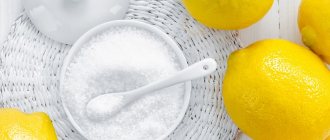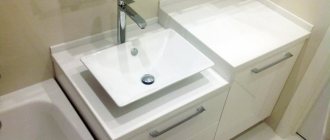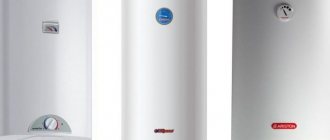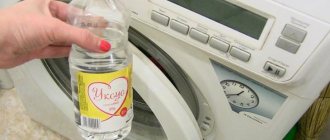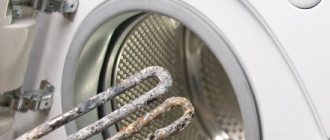dolio.ru » Tips » The best ways to remove dirt and odors from an automatic machine or how to descale a washing machine with citric acid
A washing machine is a familiar attribute of comfort and an assistant for modern housewives. With its advent, many forgot about hand washing, boiling, soaking, rinsing clothes and other household horrors. Getting your clothes or home textiles in order is now easy and simple. In order for your home “helper” to serve faithfully for many years, you need to not only use it correctly, but also regularly carry out preventive maintenance, cleaning it from scale, dirt, foreign objects, and at the same time unpleasant odors.
Why clean your washing machine?
Various contaminants and mineral deposits regularly accumulate in the washing machine, leading to the appearance of an unpleasant odor and further breakdown of the device. Scale formation and dirt accumulation occurs for the following reasons:
- Increased water hardness.
- Constant entry of large organic contaminants into the machine and improper care of the device.
- Use of aggressive detergents.
When cleaning the machine, you must pay attention to the heating element - the heating element located inside the body of the machine. It is in constant contact with water, so over time it becomes “overgrown” with lime deposits that must be removed.
The resulting scale is dangerous because it impairs the transfer of thermal energy to water. In this case, instead of water, other parts of the machine begin to heat up, which over time leads to their breakdown and replacement.
For the highest quality cleaning, it is necessary to process not only the heating element, but also other parts: trays for conditioner and powder, rubber connections, external filter, drum and water hoses. Treatment is necessary to prevent the formation of scale and the growth of bacteria that cause mold and unpleasant odors.
Step-by-step instructions for cleaning a washing machine
The washing machine is constantly contaminated with foreign particles. Improper care of the device leads to breakdowns and complete malfunction of the device. To extend its service life, you need to keep its parts clean.
It is necessary to use acetic acid, soda, lemon powder for descaling correctly according to the instructions in order to reduce harm:
Follow home recipes
To avoid negative consequences, it is important not to violate the proportions of water and cleaning agent. Look at the concentration of the substances used. High percentage vinegar can damage equipment more than limescale. Use the home cleaning method once a quarter. Otherwise, frequent use of kitchen substances will destroy the walls of the appliance parts. Pay attention to what material the machine parts are made of.
Copper should not react with vinegar, otherwise the washer will fail prematurely.
Effective ways to cleanse your home helper:
Vinegar
Apply to an empty drum. It can ruin the laundry that is inside the washing machine. Pour a glass of vinegar essence into the powder section. It should be no more than 9%. On the display, set the temperature to high (up to 100 degrees), long wash mode (about 3-4 hours). Turn on the device. Stop work after half an hour
Just click on one of the Stop or Pause buttons. Leave the washer in this state for 2 hours. After the time has elapsed, turn on the device again. When it finishes working, carefully wash the drain filter and remove any dirt. The door glass, drum and rubber seal require additional cleaning. They will need 50 ml of acetic acid and water
Wipe the listed parts with the resulting solution. Then run the machine again to completely clean the washer. Run an intensive rinse for half an hour. At the end of the process, clean the drain filter again. Wipe the glass and drum with a dry cloth.
There is no point in constantly washing a dirty machine with acid. It is advisable to alternate it with caustic soda, apple cider vinegar, bleach, and citric acid.
Soda
You can wash your washing machine using soda. The vinegar ingredient helps to cope with unpleasant odors, mold, and limescale deposits in the washing machine. In the first case, soda ash powder is used according to the algorithm:
- Find out the cause of the unpleasant odor. Fungal activity can cause a terrible stench. Mold forms on the drum, cuff folds, powder and detergent compartments. After identifying a fungal outbreak, get to work.
- To prevent baking soda from irritating your hands, wear rubber gloves. In people with hypersensitivity it may cause an allergic reaction.
- Take a kitchen ingredient, vinegar, water in equal proportions.
- Using a brush and cotton swabs, apply the resulting mixture to moldy parts.
- After treating contaminated surfaces, leave them for 1 hour.
- Then use a sponge or rag to thoroughly clean the treated areas.
- Plug in the empty machine and run a quick wash. There will be no traces left of the unpleasant smell and its provocateur.
The second option is after processing the parts, pour 2 tbsp into the powder compartment. l soda with vinegar. Then run the washer so that it runs idle for 30-60 minutes.
Can be combined with citric acid. For one procedure you will need a bag of powder, 2 tbsp. l baking soda. They are mixed and placed in the detergent compartment. Again you need to set the high temperature mode with 2 hours of operation. The tandem of two substances will easily clean equipment from many years of scale.
A substance with vinegar fights limescale on the drum, filter, and other components of the device.
There are three ways to descale your washing machine with baking soda:
- The filter is placed in the container containing the solution. To prepare it, take 2 tbsp. l soda, 400 ml water. First, the filter must be left treated with the solution for 10 minutes to soften the deposits. Then wipe the surface of the part with a rag or sponge. The remaining limescale deposits will disappear.
- The filter can be completely filled with a pack of powder. You can remove the plaque by vigorous movements of the rag. Residues are removed with running water.
- To clean the entire machine you will need a pack of powder. It is poured inside the powder compartment or drum. The device starts up for 30 minutes.
We advise you to study - Foam plastic - characteristics and properties of insulation
Why use baking soda?
Soda is widely used in everyday life, cosmetology and cooking. What is its advantage over well-known brands of washing machine cleaning products?
- Soda is an alkali that creates a negative environment for the proliferation of molds and pathogenic bacteria.
- The alkaline compound allows you to get rid of scale by dissolving deposits on the heating element and other elements.
- Unlike most industrial products, soda mixtures are non-toxic and can be easily washed off after cleaning is complete.
- Soda solutions allow you to clean your machine at home without any extra effort, saving you money on calling a technician.
Use soda to wash clothes; see below for more details on this method.
Soda ash or baking soda for washing machine?
For “cleaning” in washing machines, both baking soda and soda ash are used. What is the difference between these products, and which one is best to use for an automatic washing machine?
- The main difference between soda ash is its increased acidity: the pH of sodium carbonate is 11, while the acidity of sodium bicarbonate is only 8. High acidity allows the substance to give a stronger alkaline reaction and dissolve all kinds of deposits faster. However, an increased concentration of alkali requires more careful handling and careful adherence to dosages.
- Baking soda has a lower pH. Its main difference from sodium carbonate is its ability to easily absorb unpleasant odors. This is why baking soda is most often used to clean trays and drums from unpleasant “odors.”
To clean the washing machine, you can use both types of soda. To get rid of scale, calcined one is better, and food grade one is better for getting rid of odor.
How to clean a machine with soda - instructions
When planning to clean the machine, be sure to wear rubber gloves. Any soda (baking soda or ash) is an alkali that can cause severe allergic reactions if it comes into contact with unprotected skin.
To clean the “insides” of the washing machine:
- First, you will need to prepare a cleaning solution. To do this, take soda ash (if you don’t have soda ash, you can use baking soda), dissolve the powder in water. Proportions for cooking - 1:1.
- Stir until you get a paste-like slurry. Then apply the slurry to the inside of the drum and trays - this is where organic contaminants that cause mold most often accumulate.
- Leave the cleaning mixture on for 40 minutes. Then remove the product using the soft part of the sponge. Do not use abrasives or hard brushes - this can damage the plastic trays of the machine.
- When you have completely removed the mixture, run the quick wash program without putting any items in the drum.
To clean the drain hoses you need:
- Pour 100 g into the powder compartment. soda ash. Set the mode to quick wash without laundry. This will help get rid of both mold and the smell that appears due to the accumulation of bacteria.
- As a final step, remove all hoses and wash with a solution of water and soda. Along with the hoses, it is also necessary to rinse the filter, which is attached at the junction of the hose and the machine. After cleaning with sodium carbonate solution, be sure to rinse all parts under running water.
The final stage of “cleaning” the washing machine will be cleaning the drain filter. It is located in the front of the device under a special cover.
Cleaning is done as follows:
- Water accumulates in the filter, so place a cloth before removing it.
- After removal, treat the filter with soda solution, carefully removing all contaminants. Then rinse under running water.
- The solution also needs to clean the hole for the filter - bacteria and dirt also accumulate there.
- After washing, wipe the part dry, let the filter housing dry, and reattach it.
If you use soda ash for cleaning, the machine must be cleaned once a month, and if baking soda - 2 times a month.
Causes of dirt and odor in the washing machine
Even if your family consists of you and a pet, you have to do laundry at least once a week. Imagine how many times and in what volumes those who have children have to do laundry? And then one day you open the washing machine and notice dirt stains on the internal surfaces. In addition, there is a damp smell coming from the drum.
It would seem, where do they come from? After all, while the machine is operating, running water circulates in the drum, which should carry away all contaminants and residues without a trace. It turns out that the dirt formed when washing things remains inside the machine, and there are many reasons for this.
- Tap water used for washing contains many chemical elements, including iron, which affects its hardness.
When exposed to high temperatures, these substances concentrate and settle on hard surfaces in the form of limescale. Minerals contained in tap water settle on the heating element of the washing machine in the form of scale. - The most commonly used gentle wash cycle is 40°C. This temperature is not high enough to break down fats and completely dissolve contaminants. Dirt washed from things remains in the drain hose, filter and seal; As it decomposes over time, it becomes the cause of odors.
- Powders, bleaches, rinse aids and other products do not always dissolve completely in water. Most often, they settle in the rubber seal, forming fungus and mold under the influence of moisture. They, in turn, emit an unpleasant odor and damage clothes.
- We often use more powder and detergents, mistakenly thinking that this will improve the washing result.
In fact, the excess will simply settle to the bottom of the drum and accumulate there, eventually growing mold and mildew due to moisture. Use only as much washing powder as you need according to the instructions: excess may remain in the machine and cause mold to develop. - Many people put things to be washed in the drum of the machine until a sufficient amount has accumulated.
Dirty clothes, even dry ones, can become a source of unpleasant odors. And if you don’t remove the laundry from the drum after washing, leaving it at least overnight, the humidity will cause it to start to smell bad and may become covered with fungus or mold. Remove laundry from the machine immediately after washing to avoid mold and unpleasant odors. - Sand and rust from the water pipe settle on the inlet hose filter. The drain pump filter collects not only washed-off dirt, but also all sorts of little things from your pockets: threads, garbage, pieces of paper, pins and even coins. Over time, this can cause the machine to break down, and you will notice dirt on things and an unpleasant smell very quickly.
We advise you to study - Liquid wallpaper application technology - how to do everything correctly
As a result, the washing machine ceases to be your indispensable assistant in everyday life, but instead brings additional trouble. To avoid this, you should learn how to care for the device and clean it properly.
How to clean a machine with vinegar and soda?
To quickly and effectively remove scale and dirt, many housewives recommend cleaning the washing machine with vinegar and soda. This mixture eats away any deposits, cleaning the internal parts.
- The first step is to wash with soda. To do this, pour 3 tbsp into the powder compartment. baking soda. Run an intensive wash cycle with boiling water.
- When the cycle is complete, move on to the second stage. Pour 1/2 cup of 9% vinegar into the drum. Run a long wash: for example for cotton fabrics.
- When the vinegar wash is completed, it is best to run the third cycle - a quick wash without adding any products. Then thoroughly wipe and dry the drum and powder compartment.
How to clean a washing machine with citric acid and other products at home
At home, it is possible to rid a household appliance of dirt, scale, mildew and other harmful formations. The more old the dirt and scale on the surfaces, the more work you will have to do to get rid of it.
Cleaning the drum
- Soda and vinegar
Products available in every kitchen will help you remove scale from the heating element and drum: soda and vinegar. They are not only added to preserves and put into dough, but also used for cleaning. From a chemical point of view, scale is calcium and magnesium salts; they are destroyed under the influence of organic or inorganic acids. For a standard appliance for 5-6 kilograms of laundry, you will need 2 cups of 9% vinegar (or white alcohol), 1/4 cup of soda, the same amount of water and a household foam sponge (one side needs to be hard).
To clean, mix water and baking soda in a small bowl, then pour it into a tray for receiving washing powder and other detergents. The vinegar is poured directly into the drum itself. After this, the equipment needs to be started in idle mode, selecting a long and high-intensity erasing mode (the higher the temperature you set, the better).
- Lemon acid
Vinegar and citric acid are two interchangeable products. And we are talking not only about the culinary sphere, but also about how to clean a washing machine with citric acid. To eliminate scale and unpleasant odors, you will need, on average, to pour 2 packs (200 grams) into the washing powder tray, then turn on the equipment for washing mode, which lasts at least 1 hour. The larger the drum of a household appliance, the more lemons you will need to clean it.
Cleaning the washing machine with soda and lemon
Cleaning the washing machine with soda and citric acid will help remove limescale deposits from metal elements. The recipe is simple:
- Mix 150 gr. citric acid powder and 15 g. sodium carbonate. The resulting product must be poured into the powder tray, and then run at high temperature.
- After cleaning, you need to rinse the machine and dry it.
A washing machine is a piece of equipment that requires careful handling. Remember to clean it regularly, and try not to unnecessarily use aggressive cleaning agents that can damage machine parts.
Many people believe that soft, impurity-free tap water guarantees the cleanliness of an automatic washing machine (AWA), but during operation, scale and dirt deposits form a solid deposit on the parts and mechanism of any washing machine. Such pollution inevitably leads to machine breakdown, and its repair will cost a lot of money. It is known that special cleaners for washing machines are prohibitively expensive, and their regular purchase over the years of operation can be estimated at the cost of the machine itself. However, there are simple and inexpensive ways to properly clean the drum and heater of the machine.
Cleaning the outside of a washing machine with vinegar
It is not pure vinegar that is used for this procedure, but its solution. 500 ml of warm water will be enough - dissolve a tablespoon of vinegar in it. Moisten a sponge or linen napkin in the resulting liquid and thoroughly wipe all accessible parts of the automatic washing machine.
The question remains controversial whether or not it is possible to wipe the rubber seals on the door with vinegar. When rubber comes into contact with acid, it loses its elasticity and becomes rough. The seal of the lid may be broken, and the seal itself will very quickly begin to crack and burst.
But such a nuisance only occurs if you use a concentrated acid solution. If you wipe the seals with a weak vinegar solution, everything will be fine.
To be safe, after all the external elements of the washing machine have been processed, you need to close the drum and turn on the fastest washing mode. This is necessary in order to get rid of cleaning agent residues on the parts of the unit, eliminate the smell and wash out pieces of lime that may be stuck somewhere.
At this point, cleaning the washing machine can be considered completely completed. After the quick wash cycle is completed, you need to open the drum, wipe the machine dry and leave it to ventilate.
The most common question that interests almost all users is how often should they clean the machine with vinegar. You can answer it this way: the more often and more intensively household appliances are used, the more regular cleaning should be. But at the same time, the unit should not be exposed to acid more than once every two months. Otherwise, rubber and plastic parts will wear out quickly.
We advise you to study - Which polycarbonate is best to use for a canopy
Vinegar can be used not only to remove scale, but also to prevent its formation. To do this, it should be added to the detergent when washing, but only in small quantities.
But combining vinegar with other chemicals to remove scale is strictly not recommended. This can lead to the most undesirable consequences: a chemical reaction will begin, and the internal parts of the machine will simply melt.
As an alternative means, you can no longer use vinegar, but other also available and quite effective substances:
- citric acid;
- baking soda or soda ash;
- copper sulfate.
And for prevention, do not forget to add a softening agent to the washing powder with each wash - at least a tablespoon of the same soda. Then the laundry will be softer, scale will not form so quickly, and the automatic washing machine will last much longer.
Today, a washing machine can be found in almost every home. It saves a lot of time and makes our life easier. But this hardworking assistant periodically needs to be cleaned to remove scale and unpleasant odors. To remove them, experts recommend using advertised chemical cleaners
We would like to draw your attention to household products that are easy to use at home.
An indispensable assistant in this matter is an effective natural and, importantly, inexpensive remedy, proven over decades - vinegar! Its main advantages:
- accessibility, always “at hand”;
- antibacterial and disinfectant properties;
- perfectly removes scale:
- safety for both humans and the parts of the washing machine.
In this article we will tell you how to quickly clean an automatic washing machine with vinegar. It will easily and carefully free all parts inside the machine from dirt.
Lemon acid
The most common cleaning agent for automatic washing machines is citric acid. With its help, when exposed to temperatures, solid deposits formed during the operation of the machine are dissolved. So, to clean a standard machine with a volume of 3-5 kg, you need to use 40-60 grams of citric acid.
In this case, the crystallized powder is poured into the detergent compartment and a program is started with a temperature range of 60-90 degrees, depending on the expected level of contamination.
Important! Don't go overboard with this method. Frequent use of large amounts of citric acid at high temperatures can cause corrosion of some parts of the machine, as well as damage the rubber gaskets of the parts.
Anti-scale soda
The second, but no less effective way to remove scale is to clean the machine with soda. The parts most susceptible to scale are filters, deposits on which lead to a complete stop of the system. To maintain the functioning of the machine, it is necessary to clean both the internal and external surfaces of the filter. You can do this in the following ways:
- Soak the SMA filter in a soda solution with a proportion of 1 liter of water per 2 tbsp. l. soda, then clean it with a soft cloth and rinse under running water.
- Cover the wet surface of the filter with soda, let it stand for 15-20 minutes, then clean the scale with a brush and water.
- For heavy soiling and to achieve optimal results, it is recommended to use both cleaning methods.
To completely clean the system, you can use soda instead of detergent; for this you will need a pack of soda, which fills the powder compartment; the remaining soda must be poured into the drum of the washing machine. This method is recommended to be used with the highest possible temperature and the shortest mode. It is worth remembering that the cleanliness of the visible surface of the washing machine and drum does not guarantee the absence of scale on the internal parts and heater of the device.
For uninterrupted operation and long service life, it is necessary to regularly, at least once every six months, clean the system from dirt and scale. The most popular and budget-friendly means in the fight against solid deposits are citric acid and soda, with which you can ensure the maximum service life of your automatic washing machine.
All household appliances, including the washing machine, require proper operation, care and maintenance. If you regularly carry out preventive cleaning of the internal parts of the device, you can maximize its service life, as well as seriously save money on repairs and utility bills.
Washing machines are indispensable assistants for modern housewives. Failure of the device entails problems - financial costs, and also the need to regularly wash clothes by hand. To extend the life of the washing machine, you need to follow the rules and conditions of its operation, regularly clean the internal parts from scale, debris, and dirt.
To do this, you don’t have to buy expensive drugs - you can use what you can find in the kitchen: vinegar, citric acid, soda. When used correctly, they remove dirt even in the most difficult to reach places and extend the life of the household appliance. How to clean an automatic washing machine with citric acid or other means?
Removing scale and odor
You can descale your washing machine with vinegar and remove unpleasant odors in just one procedure.
How to clean the inside of a microwave from grease
Vinegar essence can be used by the owner of this household appliance not only for the cleaning procedure, but also as a measure to prevent the formation of scale.
For example, when washing kitchen towels, you can add a glass of vinegar essence. It won't cause any harm to things.
You can equally effectively clean your washing machine with baking soda and vinegar. To do this, for preventive purposes, it is necessary to periodically add these two components in small quantities during washing.
Experts do not recommend carrying out such cleaning more often than once every six months. The important point is that after each cleaning the machine must be wiped dry , and the door and powder compartment left open so that any remaining liquid can evaporate. The filter should be periodically cleaned to remove contaminants that have appeared in it.
Why clean your washing machine?
Tap water in cities is of poor quality, as it contains a lot of calcium and magnesium salts, and sometimes impurities of heavy metals, rust, and other harmful substances. This liquid is called hard - it is harmful not only to the human body, but also to household appliances.
If you heat hard water, trace element salts will precipitate, forming scale that settles on the parts of the washing machine. The more often you wash clothes at temperatures above 60 degrees , the more impurities will settle on the elements, including the heating element responsible for heating the water. Over time, the scale layer thickens, causing the following to happen:
- the water in the drum will heat up slowly , since the substances that make up the scale have low thermal conductivity;
- the machine will “pull” more electricity to bring the water to the required temperature;
- parts will constantly overheat and quickly break.
Hard water is not the only negative factor affecting a washing machine. Mold and mildew often grow in the folds of rubber parts , and pathogenic microorganisms multiply. Residues of detergents accumulate inside the machine, and hair, sand, and objects like coins get stuck in the filter.
For reference! Water hardness can be determined using a number of criteria. When washing with soft water, soap is difficult to wash off from clothes, and hair becomes soft after washing. With increased rigidity, the situation is the opposite - detergents are washed out easily, and the hair seems tough.
Rotten smell - causes
- Limescale, or scale, on the internal parts of the washing machine. In the absence of regular cleaning, the resulting plaque can produce a rather noticeable odor.
- Formation of mold and pathogenic bacteria. Typical for machines with horizontal loading. Often, in these types of washing machines, after the next washing cycle, the water is not completely drained, and some of it remains in the gasket of the hatch for loading laundry. Therefore, after finishing work, many people prefer to leave the drum open. Moisture accumulates in a closed drum, and dampness, as you know, is an ideal environment for the proliferation of microorganisms. The natural result, again, is an unpleasant smell of rot and mold.
- You may have washed your laundry at the lowest temperatures and fast rinses. In this mode, dirt, and therefore bacteria, are not completely washed out of clothes, but settle on the walls of the hatch and internal parts. In other words, microbes simply wander from one place to another.
- You used low-quality washing powders or other detergents.
- The drain hose is not connected correctly to the drain. The water does not drain completely, water circulation is disrupted, and odors from the sewer rise to the top.
- Hard water, the sediment and salts of which can cause deposits inside the machine structure.
In this case, bacteria have a much higher chance of surviving; they can easily withstand low temperatures, but high temperatures kill most of them.
Bacteria found on clothes spread to the walls of the tank, settle on accumulations of small debris and live in the machine itself, contributing to the spread of an unpleasant odor. Also, after each wash, be sure to dry the machine thoroughly. Otherwise, bacteria receive an ideal environment for their life: enormous humidity and heat.
Cleaning the washing machine with vinegar
To avoid the spread of bacteria and a rotten smell, you must carefully check things before washing for crumbs, cookies, paper and various debris. All this creates a favorable environment for the proliferation of bacteria.
An unpleasant odor may also occur if, when cleaning the heating element, you did not remove all remaining scale. There may be remains of limescale at the bottom of the tank; they must be removed in a timely manner, otherwise a fungal coating will appear with subsequent disastrous consequences. It is sometimes very difficult to get rid of them.
How to tell if your car needs cleaning
To completely protect the car from breakdowns, it is cleaned regularly - about 1-2 times a month . You can determine the need to clean household appliances by changes in their operation - the machine runs longer, makes a lot of noise, turns off on its own, and emits an unpleasant odor. After washing, the laundry remains stained or does not sparkle with cleanliness as before. Owners of faulty household appliances often notice an increase in their utility bills and excessive consumption of electricity and water.
How to clean a washing machine
You can clean your washing machine from limescale in several ways. Manufacturers of household appliances recommend calling a technician, but this is expensive and not always advisable. Water softeners like Calgon are also expensive, and the components they contain do not destroy scale. It is necessary to use such means from the first day of operation of the device.
If limescale has already deposited on the elements, adding softeners will not work, since they reduce water hardness and do not fight deposits. An alternative option is to thoroughly clean the machine, then purchase Calgon and use it with every wash. To remove plaque, you can use special products sold in stores, or use inexpensive homemade recipes.
Attention! Failure of the heating element is the most serious trouble that happens to washing machines. Replacing this part is expensive, and sometimes repairs are simply impractical - it is cheaper to purchase new household appliances.
Industrial products
Store-bought anti-scale products are made based on chlorine or other caustic components. They work more effectively than traditional recipes, but have several significant disadvantages.
Such products are not cheap, and when in contact with water and salts they can form toxic fumes that can be harmful to health. In addition, caustic substances can remain in the drum, after which they will end up on clothing, constantly irritating the skin. But in case of intense pollution, it is unlikely that it will be possible to do without “chemicals”, since a thick layer of scale does not always respond to home remedies. In this case, it is important to choose the right product that will cope with the problem.
Table 1. Anti-scale agents
| Product name | Description and characteristics |
| Universal anti-scale | A Russian product that can be used for any heating equipment - boilers, electric kettles, etc. |
| Magic Power | A German product that is recommended for removing intense dirt, thick layers of scale, bacteria |
| Topper 3004 | A product developed by appliance manufacturers Bosch and Miele, which is recommended for cleaning devices of these brands |
| Dr. Teng Antibacterial | A drug from Russian manufacturers that removes plaque and has an antibacterial effect - destroys fungal spores and pathogenic microorganisms |
| Top House | German product for cleaning washing machine parts from limescale |
| Beckmann | A universal product for removing scale and bacteria from metal surfaces. Made in Germany |
| Kaneyo | A chlorine-based product manufactured in Japan. Has an intense antibacterial effect, eliminates unpleasant odors and pathogenic microorganisms |
| Nagara | Another Japanese drug in tablet form that removes limescale, mold and germs |
| Luxus Professional | Products from Russian manufacturers intended for cleaning washing machines or dishwashers |
| Frisch activ | An effective remedy for combating dirt and deposits on metal parts of washing machines, eliminates lime deposits, unpleasant odors, and fungal spores |
To clean the insides of household appliances from scale, you cannot use products not intended for this purpose (Domestos, Silit), as they can irreparably damage the device.
Attention! When using industrial products to descale metal elements, you must carefully read the instructions for use. If used incorrectly, they will not give the desired effect, and can also cause harm to health.
Prices for washing machine care products
Folk remedies
Homemade washing machine cleaners are not as effective, but are cheaper. It is difficult to call such substances harmless - they are quite aggressive and can form caustic fumes, especially if you combine several components (citric acid with chlorine or soda). In addition, excessive amounts of products can corrode the rubber and plastic elements of the machine, so care must be taken when using. The most common substances for descaling washing machines include:
They are used separately or together to enhance the effect of the procedure, but do not forget about a sense of proportion so as not to spoil the elements of the device.
How to clean a washing machine
To achieve the desired effect, cleaning the washing machine is carried out according to a certain algorithm - first remove dirt in accessible places, then “drive” the device with a cleaning agent, wipe it from the outside.
Pre-cleaning
Automatic washing machines are equipped with two filters, one of which is located on the back of the body. The second is located at the bottom right and is closed with a lid. Before starting the procedure, it is better to stock up on a bucket and a rag - there is always a small amount of water left in the compartment. Remove the filter, clean it of small objects, hair, debris, and wipe with a damp cloth. After this, return the parts to their place and screw on the lid.
In addition to the filter, you need to clean the detergent compartment, where powder deposits accumulate. It is taken out, cleaned well with a sponge using a cleaning agent, and then washed under running water. Mold often forms in this part of the machine - if black or gray stains are visible on the surface, the part must be placed in a container, covered with powder, filled with water and left overnight. In the morning, clean the compartment (it is convenient to use a toothbrush), wipe it thoroughly with a damp and dry cloth.
Cleaning a washing machine with vinegar: pros and cons
If you have not yet decided whether to clean your machine with vinegar, evaluate its merits. This product significantly outperforms its competitors in the following indicators:
- affordable price and good price/quality ratio,
- reliable elimination of unpleasant odors,
- excellent effect in removing mold,
- good descaling of all internal parts of the washing machine.
Among the “disadvantages” we can note:
a sharp and fairly persistent odor, which is removed by ventilation and additional rinsing when diluting 70% vinegar essence to 9% cleaning vinegar, it is important to strictly observe.
We hope that after reading this article, you now have no doubt about using vinegar as a cleanser and disinfectant.
It can also be used for preventive purposes - adding a small amount of vinegar to the washing machine during washing softens hard water and reduces the conditions for scale formation.
Clean your automatic machine in a timely manner with vinegar to remove scale, unpleasant odors, bacteria, and dirt, and it will reliably serve you for a long time.
Scale prevention
If you have a hood in your home, be sure to read our article on the topic - How to clean grease from a hood.
Preventing scale from appearing on washing machine parts is easier than dealing with it later. There are simple rules for this that will keep the washing machine clean and extend its service life.
- If the water is too hard , it is recommended or another softening agent to it
- detergent tray must be cleaned regularly , rinsed under running water and dried.
- Immediately after washing, wipe the rubber parts of the machine dry and open the door for ventilation .
- Once every six months, the device should be “run” without laundry with the addition of Antiscale or a similar drug.
- For washing, use only powder intended for automatic washing machines.
- If after cleaning the machine refuses to drain water or does not work well, contact a service center - perhaps the layer of scale is so thick that you cannot get rid of it yourself.
Advantages and disadvantages
Before you begin the cleaning procedure, you need to analyze the pros and cons. First, let's look at the benefits of using vinegar:
- This is an effective remedy. Vinegar is an acid, and quite concentrated, so it does an excellent job of removing scale and dissolving deposits formed on the heating element and other internal elements of the washing machine.
- Significant savings. Vinegar is much cheaper than specialized anti-scale products, so cleaning with it will definitely not be a blow to the family budget.
- Easy to use. The product is completely ready for use and does not require additional preparation if you use 9% vinegar. The essence is very concentrated and requires dilution with water.
- Relative safety. If you use the product correctly and follow the proportions, it will not harm either the device or its owners who are cleaning it.
- Vinegar removes not only plaque formed on parts, but also odors that arise from stagnant water and rotting of stuck fabric fibers, which many owners encounter.
- A specific odor that remains in the washing machine and can be quite strong, and can also transfer to the items being washed. Long-term ventilation of the device or “idle” washing without laundry with washing powder will help get rid of it.
- Possible consequences. Acid can damage the integrity of rubber parts, such as door seals. If they do not provide a tight seal and fit tightly to the body, breakdowns are possible. This problem can be avoided if you do not exceed the dosage of vinegar and do not use it too often.
The device is washed according to the following algorithm:
- Empty the drum of any remaining items as they may be damaged by acid.
- Pour vinegar into the compartment of the machine intended for washing powder. Surely you want to know how much vinegar you need for effective cleaning. It all depends on the hardness level of the tap water and the thickness of the limescale deposits. If the indicator is increased, and scale covers the heating element and other parts with a dense layer (this can be seen when opening the device case), then use two glasses. If the plaque is insignificant, one glass is enough.
- Select the longest washing mode with a temperature of at least 60 degrees (preferably 80-90) and start the cycle.
- When the water in the appliance drum is hot enough (about twenty minutes after starting), stop the wash by pressing pause and leave the washer for an hour so that the product has time to penetrate the plaque and dissolve it.
- Turn on the appliance to completely complete the “idle” wash.
- Clean the filter from any remaining dissolved scale.
- In a weak vinegar solution (three or four parts water to one part product), moisten a cloth and wipe it over the entire drum and the rubber seal of the hatch door.
- Now turn on the shortest program without adding washing powder or other detergents.
- Wipe the drum, door, cuff and powder compartment with a clean, dry cloth.
- Many people are interested in which vinegar is best for descaling the appliance. The best option is ordinary transparent tableware, the concentration of which is 9%. A 6% product will only cope with minor scale. And concentrated 70% acid is diluted: seven parts of water per part of the product.
- Effective prevention will help prevent scale from appearing. Either use a specialized product (“Antin-scale”, “Calgon”) every time you wash, or periodically clean it with vinegar. But reduce its amount and do not carry out the procedure too often; once every two to three months is enough. Installing a filter will also help eliminate the causes of scale and solve the problem of increased water hardness.
- To not only descale the appliance, but also disinfect it and get rid of odors, you can use vinegar along with baking soda. The proportions will be approximately equal.
- Do not exceed the amount specified in the algorithm so as not to damage the machine parts.

